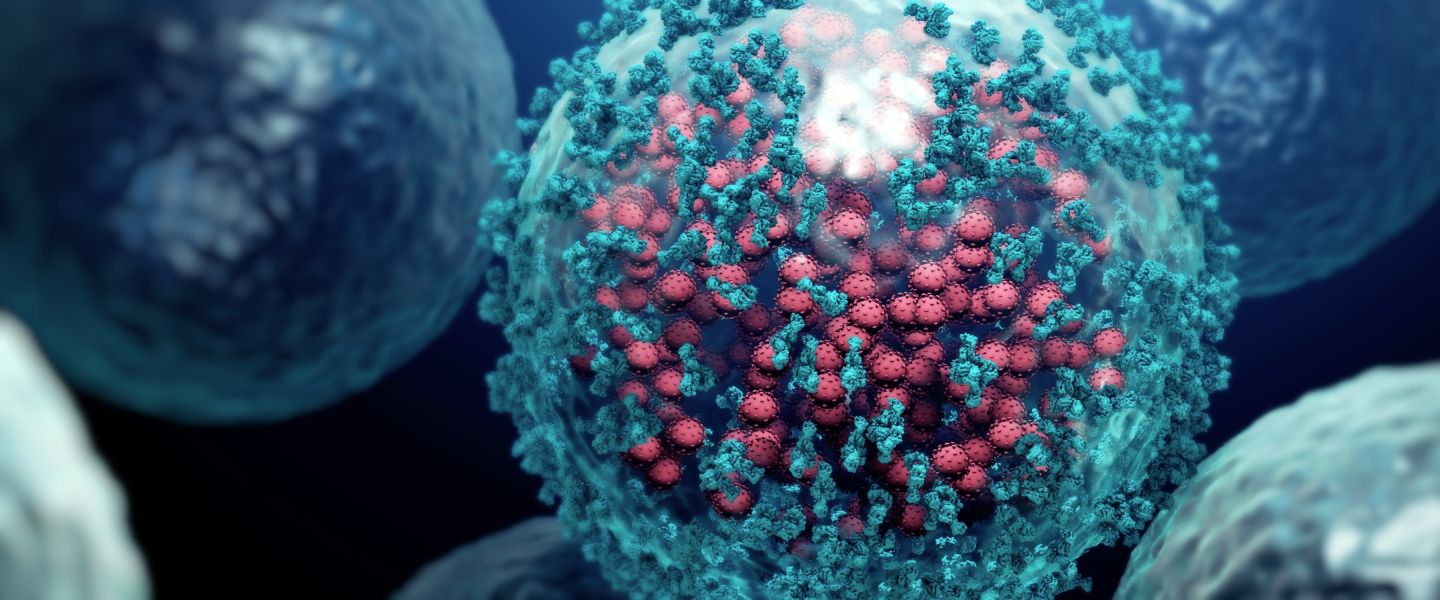SHARING / REPOSTING GUIDELINES: We're very happy to have posts/articles shared as direct links.
However, if you are replicating and re-posting information from this website or our posts, Abbey requests that you:
A) Only ever share articles in part (not in full). (eg. You can lift a paragraph as a way of introducing your readers to the topic) B) Be sure to always provide a direct link/URL back to the full original article here on the MyHealingCommunity.com website. Thanks in advance for your co-operation when sharing and re-posting any and all information that appears on this website.
Liposomes and Cancer Treatment: A Promising Approach for Enhancing Bioavailability and Reducing Interactions
Liposomal formulas are becoming increasingly popular in the world of medicine and healthcare. They offer a unique way to deliver nutrients, medications, and supplements directly into the bloodstream, bypassing the liver's first-pass metabolism. This allows for increased bioavailability and better absorption rates than traditional delivery methods.
Liposomal Formulas Enhance Bioavailability
The liposome structure is made up of phospholipids, which are similar in composition to cell membranes in our bodies. This allows for easier integration into our cells, leading to a higher absorption rate and longer circulating time in the blood stream.
Additionally, liposomes can be neutrally charged or positively charged depending on their formulation. Neutrally charged liposomes have been shown to have longer circulation time in the blood stream than positively charged ones.
This increased bio-availability also makes it possible for lower doses of drugs or supplements to be effective since there is less wastage as compared with traditional methods. Enhanced bioavailability through liposomal formulas has opened new doors when it comes to cancer treatment by ensuring maximum drug and supplement efficacy while minimising side effects caused by other delivery methods such as chemotherapy.
Phospholipids Enhanced with Chitosan
Phospholipids with chitosan have gained significant attention in the development of liposomal formulas. Combining these ingredients enhances the bioavailability of various active compounds, including those used for cancer treatment.
Combining phospholipids with Chitosan can create neutrally charged liposomes capable of bypassing liver phase 1 metabolism. This means that more active compound will reach their intended targets instead of being metabolized or excreted before reaching their full potential. Utilizing these natural ingredients together provides an opportunity to enhance supplement and drug delivery efficacy.
Liposomes and First-pass Metabolism
First-pass Metabolism also known as Phase 1 of liver metabolism and it is where Cytochrome P450 enzymes; CYP2C9, CYP3A4 and CYP2D6, all highly significant metabolic enzymes perform crucial roles in the metabolism of natural compounds and drugs in the human body.
Cytochrome P450 enzymes; CYP2C9, CYP3A4 and CYP2D6 are extensively involved in the metabolism of oncology drugs. Some examples of such oncology drugs include paclitaxel, docetaxel, imatinib, erlotinib, sorafenib, and sunitinib. These medications are used to treat different types of cancers including breast cancer, lung cancer, leukemia and gastrointestinal stromal tumors (GIST). The importance of understanding the role of cytochrome P450 enzymes in drug therapy cannot be overstated as it influences drug efficacy and toxicity levels in patients undergoing these treatments.
Remember, by utilising Liposomal formulas combining phospholipids and chitosan, your supplements bypass liver phase 1 metabolism and enter the cells directly, increasing absorption rates and fewer clashes with first-pass metabolic enzymes.
Safety
It is important to note that while liposomal formulations offer many benefits, speaking with a healthcare professional before starting any new supplement or medication regimen is always recommended.
Many of the best liposomal formulas contain Chitosan. Although Chitosan is generally considered non-allergenic, individuals with a shellfish allergy may still be at risk of an allergic reaction.
These formulas may also affect bile production by the liver, causing further complications for patients with pre-existing liver conditions. As such, healthcare providers must carefully monitor patients using liposomal therapies and adjust dosages as needed based on individual health factors. It's essential for patients to communicate any concerns or changes in symptoms with their medical team promptly so they can receive appropriate care and support throughout their treatment journey.
The directions on the bottle consider timing (e.g., an empty stomach is important). Follow your practitioner's guidance regarding the dose that is best for you at any given stage of your cancer healing journey.
Liposome Basics Summary
from the 2022 Review of Liposomes as a Drug Delivery System
This review summary highlights liposomes' advantages as drug delivery vehicles, their targeting mechanisms, and the ligands used for active targeting.
Liposomes as drug vehicles:
- Protect encapsulated substances from physiological degradation
- Extend drug half-life
- Control drug molecule release
- Offer excellent biocompatibility and safety
Targeting capabilities of liposomes:
- Can deliver payload selectively to diseased sites
- Use passive and/or active targeting
- Decrease systemic side-effects
- Elevate maximum-tolerated dose
- Improve therapeutic benefits
Passive targeting:
- Normal tissue: tight intracellular junctions (2-6 nm)
- Abnormal tissues (e.g., tumours, inflammatory sites):
porous capillaries (100 nm-2 µm)
- Liposomes can cross discontinuous neovasculature
- Accumulate and are detained at abnormal tissues
Active targeting:
- Uses specific interactions between ligands and receptors
- Ligands on liposome surface
- Receptors on tumour cells
Overexpressed receptors on tumour cells:
- Vascular endothelial growth factor (VEGF)
- Epidermal growth factor (EGF)
- Folic acid (FA)
- Integrin
- CD44
- CD13
- Prostate-specific membrane antigen
Specific ligands for surface modification of liposomes:
- Antibodies
- Nuclear acids (e.g., aptamers)
- Proteins (e.g., transferrin)
- Peptides (e.g., iRGD, iNGR)
- Small molecules (e.g., folic acid)
- Carbohydrates (e.g., dextran, mannose, galactose - targeting macrophages)
Liu P, Chen G, Zhang J. A Review of Liposomes as a Drug Delivery System: Current Status of Approved Products, Regulatory Environments, and Future Perspectives. Molecules. 2022 Feb 17;27(4):1372. doi: 10.3390/molecules27041372. PMID: 35209162; PMCID: PMC8879473. https://www.ncbi.nlm.nih.gov/pmc/articles/PMC8879473/
MCS formulas are a trusted source of neutrally charged liposomal compounds for cancer patients.
Liposome encapsulated, pure, highest potency compounds formulated into dry powder capsules that can be safely shipped worldwide whilst giving back 50% of net profits to the cancer projects overlooked by large pharmaceutical companies due to non-existing intellectual property required to convert discoveries into profitable products. As a privately owned and ethical company, MCS Formulas can put patients' needs first and allocate a significant portion of its profits to support high-potential academic projects.
Learn more and find our MCS formulas discount code here - www.myhealingcommunity.com/mhc-discounts-with-suppliers/
* MCS offers ULTRAFAST WORLDWIDE SHIPPING with FedEx and UPS
** MCS are a SOCIAL ENTERPRISE - see the We Donate 50% program
References
Lee M. K. (2020). Liposomes for Enhanced Bioavailability of Water-Insoluble Drugs: In Vivo Evidence and Recent Approaches. Pharmaceutics, 12(3), 264. https://doi.org/10.3390/pharmaceutics12030264
Kumari, L., Choudhari, Y., Patel, P., Gupta, G. D., Singh, D., Rosenholm, J. M., Bansal, K. K., & Kurmi, B. D. (2023). Advancement in Solubilization Approaches: A Step towards Bioavailability Enhancement of Poorly Soluble Drugs. Life (Basel, Switzerland), 13(5), 1099. https://doi.org/10.3390/life13051099
Markowski, A., Zaremba-Czogalla, M., Jaromin, A., Olczak, E., Zygmunt, A., Etezadi, H., Boyd, B. J., & Gubernator, J. (2023). Novel Liposomal Formulation of Baicalein for the Treatment of Pancreatic Ductal Adenocarcinoma: Design, Characterization, and Evaluation. Pharmaceutics, 15(1), 179. https://doi.org/10.3390/pharmaceutics15010179
Mahmud, M., Piwoni, A., Filipczak, N., Janicka, M., & Gubernator, J. (2016). Long-Circulating Curcumin-Loaded Liposome Formulations with High Incorporation Efficiency, Stability and Anticancer Activity towards Pancreatic Adenocarcinoma Cell Lines In Vitro. PloS one, 11(12), e0167787. https://doi.org/10.1371/journal.pone.0167787
Duarte, J. A., Gomes, E. R., De Barros, A. L. B., & Leite, E. A. (2023). Co-Encapsulation of Simvastatin and Doxorubicin into pH-Sensitive Liposomes Enhances Antitumoral Activity in Breast Cancer Cell Lines. Pharmaceutics, 15(2), 369. https://doi.org/10.3390/pharmaceutics15020369
Gomes, E. R., Carvalho, A. T., Barbosa, T. C., Ferreira, L. L., Calado, H. D. R., Sabino, A. P., & Oliveira, M. C. (2022). Fusion of Tumor-Derived Exosomes with Long-Circulating and pH-Sensitive Liposomes Loaded with Doxorubicin for the Treatment of Breast Cancer. AAPS PharmSciTech, 23(7), 255. https://doi.org/10.1208/s12249-022-02349-y
DISCLAIMER: Any and all information in this post was gathered from published research in cell lines or animals, or from typical clinical use. It may not be complete, may not have not been verified in humans, and is NOT meant or given as medical advice, but only as a guide to further exploration.











